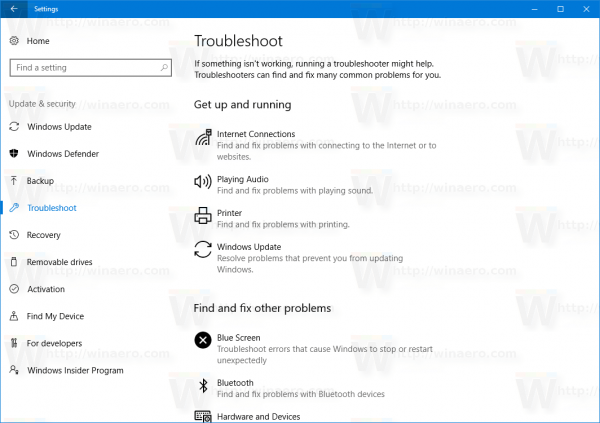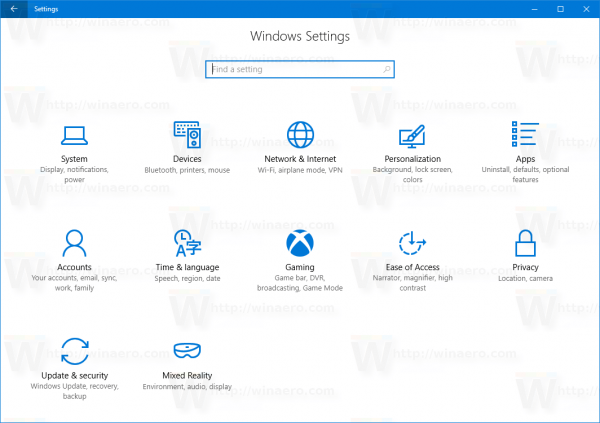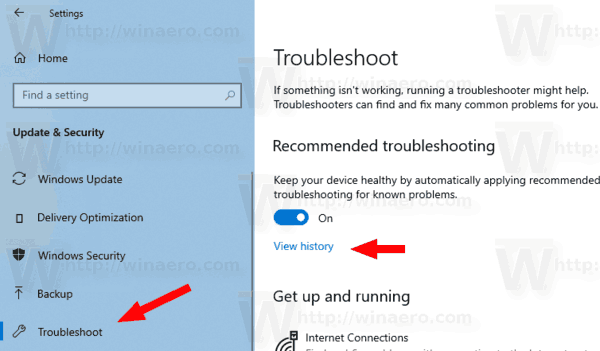To fix various problems with the OS, Windows 10 comes with a number of built-in troubleshooters. Sometimes they are really useful and can resolve the issue quickly. Starting in Windows 10 build 17704, Microsoft introduced the ability to automatically apply the recommended troubleshooting fixes for known problems. Here is how to view the recommended troubleshooting history in Windows 10.
Advertisеment
In Windows 10, Microsoft has added all the available troubleshooters to the Settings app. The link from the classic Control Panel also opens the new Settings page.
Troubleshooters in Windows 10
To run a troubleshooter in Windows 10, you can use a new page in the Settings app. You will find them under Settings \ Update & security \ Troubleshoot.

The following troubleshooters are available.
- Internet connections
- Playing Audio
- Printer
- Windows Update
- Blue Screen
- Bluetooth
- Hardware and Devices
- HomeGroup
- Incoming Connections
- Keyboard
- Network Adapter
- Power
- Program Compatibility Troubleshooter
- Recording Audio
- Search and Indexing
- Shared Folders
- Speech
- Video Playback
- Windows Store Apps
The new Automatic Recommended Troubleshooting feature saves the history of applied improvements and fixes. Here is how to see it.
To view the Automatic Recommended Troubleshooting historyin Windows 10, do the following.
- Open the Settings app.

- Navigate to Update & security -> Troubleshoot.
- On the right, click on the link View history under Recommended troubleshooting.

- You will now see the recommended troubleshooting history (if available).
Tip: If the new Automatic Recommended Troubleshooting feature doesn't work properly for you or gives issues, you can disable it. There are two methods you can use. First of all, you can disable it in Settings using the option under the Recommended Troubleshooting section mentioned above. Alternatively, you can disable it with a Registry tweak.
Go to the key
HKEY_LOCAL_MACHINE\SOFTWARE\Microsoft\WindowsMitigation
There, modify or create a new 32-Bit DWORD value UserPreference. Supported values: 1 - enabled, 3 - disabled.
For reference, see the following article:
Disable Automatic Recommended Troubleshooting in Windows 10
Related articles:
- Clear Troubleshooting History in Windows 10
- View Troubleshooting History in Windows 10
- How to Run a Troubleshooter in Windows 10 to Resolve Problems
- How to access recovery and troubleshooting options via reboot in Windows 10
- Backup Security and Maintenance Notification Settings in Windows 10
Support us
Winaero greatly relies on your support. You can help the site keep bringing you interesting and useful content and software by using these options:
